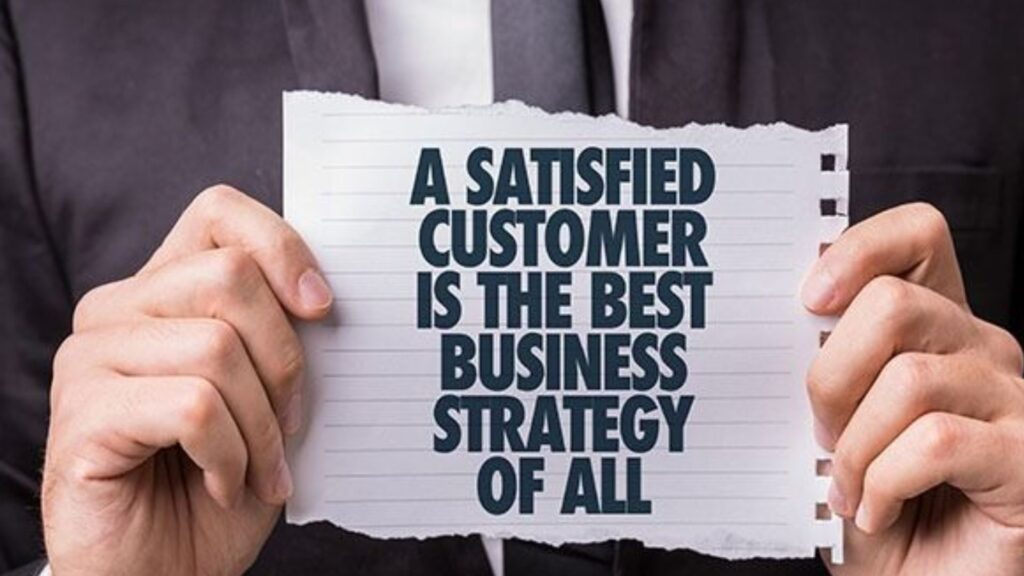In the fast-paced, customer-oriented world of today, brands are constantly seeking ways to stay ahead of the competition. And can you believe it? The solution could be staring you in the face—customer input. It is the hidden treasure that can enhance your brand, enhance your product, and help you differentiate yourself in a competitive market.
Let’s explore the positive impact of customer feedback on your product, the advantages of utilizing it for branding, effective strategies for gathering feedback, and more. Therefore, prepare yourself and fasten your seatbelt to discover the most efficient tactics for turning customer feedback into your hidden advantage!
Why Is Customer Feedback Important?
Customer feedback is like gold dust. It gives you direct insight into what your audience loves (and doesn’t love) about your product. It’s real, raw, and unfiltered. By using this feedback, you can make data-driven decisions, fix problems, and create products that are exactly what your customers need.
How Can Customer Feedback Improve Your Brand?
- Builds Trust: When customers see that you’re actively listening to their feedback and making changes, it builds trust. This trust translates into loyalty, repeat purchases, and positive word-of-mouth.
- Improves Product Quality: Feedback highlights the strengths and weaknesses of your product. You can address pain points and enhance features that are performing well.
- Creates a Customer-Centric Brand: Brands that incorporate customer feedback into their development process show that they care. This not only strengthens your relationship with customers but also keeps them coming back.
What Are the Benefits of Using Customer Feedback for Branding?
Using customer feedback to guide your branding can give you a competitive edge. Here are a few ways it benefits your brand:
- Personalization: You can tailor your messaging and marketing strategies based on real customer experiences.
- Reputation Boost: Actively responding to feedback—especially when it’s negative—shows that you’re committed to improvement. This can turn even the harshest critics into brand advocates.
- Increased Engagement: Encouraging and responding to feedback fosters a sense of community, boosting engagement and brand loyalty.
How to Collect Customer Feedback Effectively
Collecting feedback might sound simple, but doing it effectively is key. Here’s how you can ace it:
- Surveys and Polls: Keep them short and to the point. Ask targeted questions that give you actionable insights.
- Social Media: Platforms like Twitter and Instagram are gold mines for real-time feedback. Monitor mentions, comments, and DMs for honest opinions.
- Email Feedback: Send follow-up emails after a purchase asking for feedback. This not only helps you gather information but also keeps the conversation going with your customers.
- Live Chats and Customer Support: These provide on-the-spot feedback, especially for troubleshooting or customer service-related queries.
How Can Brands Use Customer Feedback to Enhance Products/Services?
Once you have the feedback, it’s time to take action! Here’s how brands can use customer feedback to enhance their products or services:
- Identify Gaps: Feedback reveals what your product lacks. Use it to make improvements or create new features that better serve your audience.
- Iterate Quickly: Brands that act on feedback quickly stand out. Constant iterations keep your product evolving and relevant in a competitive market.
- Test New Ideas: Before launching new products or features, gather customer feedback during the development phase. This reduces the chances of failure and ensures you’re building something people want.
What Are Examples of Successful Brands Using Customer Feedback?
Many successful brands have mastered the art of leveraging customer feedback. Here are a few notable examples:
- Apple: Apple uses customer feedback to constantly refine their products, ensuring each version of the iPhone addresses previous issues while adding customer-desired features.
- Starbucks: Through its “My Starbucks Idea” platform, Starbucks invites customers to submit their suggestions for new products or improvements. Some popular items, like the Pumpkin Spice Latte, have come from this initiative.
- Netflix: The streaming giant uses data-driven customer feedback to refine its recommendation algorithms, ensuring users get the content they love.
What Tools Can I Use to Gather Customer Feedback?
There are plenty of tools out there to help you collect and manage feedback. Here are some popular options:
- SurveyMonkey: Create detailed surveys to capture in-depth feedback.
- Google Forms: A free and easy way to collect customer insights.
- Hotjar: This tool provides heatmaps and feedback widgets that track customer behavior on your website.
- Zendesk: A customer service platform that lets you gather feedback through support tickets and live chat.
- Typeform: A sleek, user-friendly survey tool that makes feedback collection engaging.
How Do You Analyze Customer Feedback for Actionable Insights?
Now that you’ve gathered your feedback, the next step is analysis. Here’s how you do it:
- Look for Patterns: Is there a recurring complaint or feature request? Focus on trends that pop up frequently.
- Segment Feedback: Group feedback by customer type or behavior. This allows you to tailor your product or service to different customer needs.
- Prioritize: Not every piece of feedback can be acted upon immediately. Prioritize changes based on urgency and impact.
How Can Negative Customer Feedback Be Turned into a Positive Brand Experience?
Negative feedback can feel like a punch to the gut, but it’s actually an opportunity. Here’s how you can turn it around:
- Respond Quickly: Address the issue head-on and offer a solution. Customers appreciate responsiveness.
- Apologize and Compensate: A simple apology, along with a discount or free service, can work wonders in restoring goodwill.
- Learn and Improve: Use the feedback to make tangible changes. Then, let the customer know you’ve acted on their suggestion.
What Are the Best Practices for Responding to Customer Feedback?
Responding to feedback—whether positive or negative—can strengthen your brand. Here’s how to do it right:
- Be Prompt: A quick response shows that you value your customers’ opinions.
- Stay Professional: Even if the feedback is negative, maintain a positive and professional tone.
- Show Gratitude: Always thank customers for their feedback, no matter the sentiment.
Customer feedback isn’t just a checkbox—it’s a powerful tool that can shape your product and brand. By collecting, analyzing, and acting on feedback, you can make meaningful improvements that drive customer loyalty, enhance your product, and boost your brand’s reputation.
So, start listening, keep iterating, and watch your brand soar to new heights. After all, your customers are your best advisors—they know exactly what they want, and now, so do you!
Don’t forget to read: What are the best practices for email marketing?



